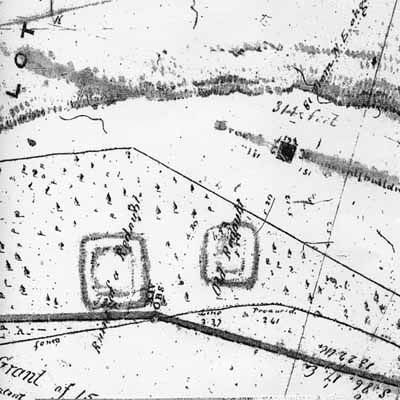Fort Drummond National Historic Site of Canada
Queenston, Ontario

Map
© Library and Archives Canada/Bibliothèque et Archives Canada, H3/450, NMC 11434, 1854.
Address :
Queenston, Ontario
Recognition Statute:
Historic Sites and Monuments Act (R.S.C., 1985, c. H-4)
Designation Date:
1928-05-16
Dates:
-
1814 to 1814
(Construction)
Event, Person, Organization:
-
War of 1812
(Event)
-
Queenston - Chippawa Portage Road
(Event)
Other Name(s):
-
Fort Drummond
(Designation Name)
Research Report Number:
2008-CED/SDC-23
Plaque(s)
Existing plaque: near General Brock Monument at entrance to Children's wading pool Queenston, Ontario
This double fortification was built by military labour for the defence of this frontier in May and June, 1814, and named in honour of Sir Gordon Drummond. The position being rendered untenable it was dismantled and abandoned, 10th July, 1814, reoccupied by British troops on 23rd July, and held as a military post until the end of the war.
Description of Historic Place
Fort Drummond National Historic Site of Canada is located in a park setting not far from Brock’s Monument in Queenston, Ontario. Built to protect the portage route around Niagara Falls during the War of 1812, the fort’s two square redoubts fell into ruin following the hostilities, and were incorporated into the park in 1926, now Queenston Heights National Historic Site of Canada. Official recognition refers to the two redoubts as defined by the outer limits of their earthworks.
Heritage Value
Fort Drummond was designated a national historic site of Canada in 1928 because: it was built to defend the main portage road from Chippawa to Queenston.
Fort Drummond was built in the spring of 1814 on Queenston Heights to guard the portage route around Niagara Falls from Chippawa to Queenston. It was composed of a square redoubt, enclosing a blockhouse for 100 men and a U-shaped advanced battery. Following the end of the war, the post was abandoned and sank into ruin. With the creation of the Niagara Parks Commission, both redoubts were incorporated into the Queenston Heights park. In 1926, a children’s wading pool was built in the western redoubt where the barracks once stood, and this use continues today.
Sources: Historic Sites and Monuments Board of Canada, Minutes, 1928; Plaque text, 1977.
Character-Defining Elements
Key elements that contribute to the heritage character of the site include: its location and park-like setting and proximity to Brock’s Monument within Queenston Heights National Historic Site of Canada; the two extant redoubts in their forms, positions and setting; the integrity of any surviving or as yet unidentified archaeological remains which may be found within the site in their original placement and extent; viewscapes to and from the two extant redoubts, the old Portage Road and the surrounding park, including Brock’s Monument.